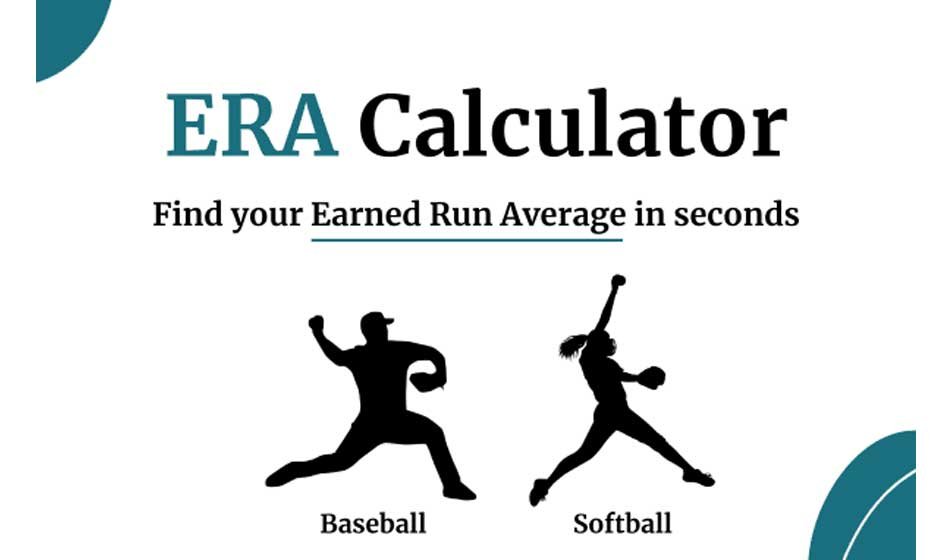Table of Contents
ToggleIntroduction to Earned Run Average (ERA)
What is ERA?
In the intricate world of baseball statistics, the Earned Run Average, widely known as ERA, stands as a fundamental metric for evaluating a pitcher’s performance. It quantifies the average number of earned runs a pitcher allows over nine innings pitched. This statistic provides a standardized way to compare pitchers across different games and seasons, offering valuable insight into their effectiveness on the mound.
An earned run is specifically defined as a run that scores without the benefit of a fielding error or a passed ball. It highlights the pitcher’s direct responsibility for the runs allowed, clearly distinguishing their performance from any defensive miscues. This distinction is crucial for accurately assessing a pitcher’s individual skill.
Why is ERA Important in Baseball?
ERA is highly regarded as one of the most significant pitching statistics because it directly measures a pitcher’s ability to prevent opponents from scoring. A lower ERA generally points to a more effective pitcher, indicating they consistently limit the number of runs scored against their team. This makes ERA a key factor in player evaluations, contract negotiations, and even discussions for the Hall of Fame.
Beyond individual assessment, ERA plays a vital role in team strategy. Coaches and managers frequently use ERA to help determine pitching rotations, bullpen assignments, and critical game-day decisions. A clear understanding of a pitcher’s ERA aids in predicting game outcomes and formulating defensive strategies, making it indispensable for both casual fans and seasoned professionals.
The Mechanics of ERA Calculation
The ERA Formula Explained
The calculation of ERA follows a precise formula designed to normalize a pitcher’s performance to a standard nine-inning game. The formula is straightforward:
This equation ensures that regardless of whether a pitcher throws one inning or a complete game, their performance is scaled to the equivalent of a full game.
For instance, if a pitcher allows 3 earned runs over 6 innings, their ERA would be calculated as (3 / 6) × 9 = 4.50. This means, on average, this pitcher would concede 4.50 earned runs per nine innings. The simplicity and universal application of this formula make ERA an accessible and powerful tool for baseball analysis.
Key Components: Earned Runs and Innings Pitched
The two primary variables in the ERA formula are earned runs and innings pitched. As mentioned earlier, earned runs are those scored without the aid of defensive errors, directly attributable to the pitcher’s actions. This focus on earned runs ensures the statistic accurately reflects the pitcher’s individual contribution.
Innings pitched refers to the total number of innings a pitcher has completed. A full inning consists of three outs. When a pitcher records outs but does not complete a full inning, these are counted as partial innings, which are essential for accurate ERA calculation. These components form the bedrock upon which the ERA statistic is built.
Understanding Partial Innings
Partial innings are a common occurrence in baseball and require careful handling in ERA calculations. Each out recorded by a pitcher counts as one-third of an inning. Therefore, if a pitcher records one out in an inning, it is counted as 0.1 innings pitched, and two outs as 0.2 innings pitched. It’s important to note that these are not decimal representations in the traditional sense but rather a base-3 system for innings.
For calculation purposes, these partial innings are often converted to a decimal format, where one-third of an inning is approximately 0.333 and two-thirds is approximately 0.667. For example, a pitcher who pitches 5 and 2/3 innings would have 5.667 innings pitched for the ERA formula. This precise accounting ensures that every out contributes accurately to the overall ERA.
How to Use an ERA Calculator
Step-by-Step Guide to Online ERA Calculators
Online ERA calculators significantly simplify the process of determining a pitcher’s earned run average, making it accessible to everyone. Typically, users input two key pieces of information: the total number of earned runs allowed and the total number of innings pitched. Some more advanced calculators might also allow for inputting partial innings separately.
After entering these values, the ERA calculator instantly applies the formula and displays the result. This removes the need for manual calculations, reducing the chance of error and providing quick insights into a pitcher’s performance. These tools are invaluable for fans, fantasy baseball players, and statisticians alike.
Benefits of Using an ERA Calculator
The primary benefit of an ERA calculator is its efficiency and accuracy. It delivers immediate results, allowing for rapid analysis of a pitcher’s effectiveness without complex manual computations. This is particularly useful for tracking multiple pitchers or analyzing historical data with ease.
Furthermore, ERA calculators can help users understand the impact of earned runs and innings pitched on the overall ERA. By experimenting with different values, users can gain a deeper appreciation for how each component influences this critical statistic. They serve as an excellent educational tool, demystifying one of baseball’s most important metrics.
Interpreting ERA: What Makes a Good Pitcher?
Benchmarks and Historical Context
What constitutes a good ERA often depends heavily on the era of baseball and the specific league environment. Historically, an ERA below 3.00 has been considered excellent, while an ERA below 2.50 often signifies a truly dominant pitcher. However, in periods of high offense, an ERA of 3.50 might still be seen as above average. It is crucial to consider the context of the league and the specific season when evaluating any pitcher’s ERA.
For example, legendary pitchers like Cy Young and Walter Johnson played in eras characterized by lower offensive production, which frequently resulted in exceptionally low ERAs. In contrast, modern pitchers often face more potent offenses and different pitching strategies, making direct comparisons across eras quite challenging. Therefore, while general benchmarks exist, a nuanced understanding of baseball history is vital for accurate interpretation.
Factors Influencing ERA (Beyond Pitcher’s Control)
While ERA is undoubtedly a strong indicator of a pitcher’s skill, it is not entirely independent of external factors. The quality of the defense playing behind the pitcher can significantly influence the number of earned runs allowed. A strong defensive team can convert potential hits into outs, thereby reducing the number of runners on base and ultimately minimizing earned runs.
Ballparks also play a role; some stadiums are known as hitter-friendly, while others tend to favor pitchers, directly impacting the likelihood of runs being scored. Even luck, in the form of batted ball outcomes, can influence a pitcher’s ERA over shorter stretches. These external variables highlight that while ERA is a powerful metric, it should always be considered alongside other statistics for a truly comprehensive evaluation.
Conclusion: The Enduring Value of ERA
The ERA calculator and the statistic it computes remain indispensable tools for understanding and appreciating baseball. From its fundamental definition as the average earned runs allowed per nine innings to its nuanced interpretation within historical and contextual frameworks, ERA offers profound insight into a pitcher’s effectiveness.
It serves not only as a benchmark for individual performance but also as a critical component in strategic decision-making for teams. While other advanced metrics have certainly emerged, the simplicity and directness of ERA ensure its continued relevance in the ever-evolving landscape of baseball analytics. For fans and professionals alike, mastering the ERA calculator is a significant step towards a deeper appreciation of the game’s strategic depth and the artistry of pitching.













